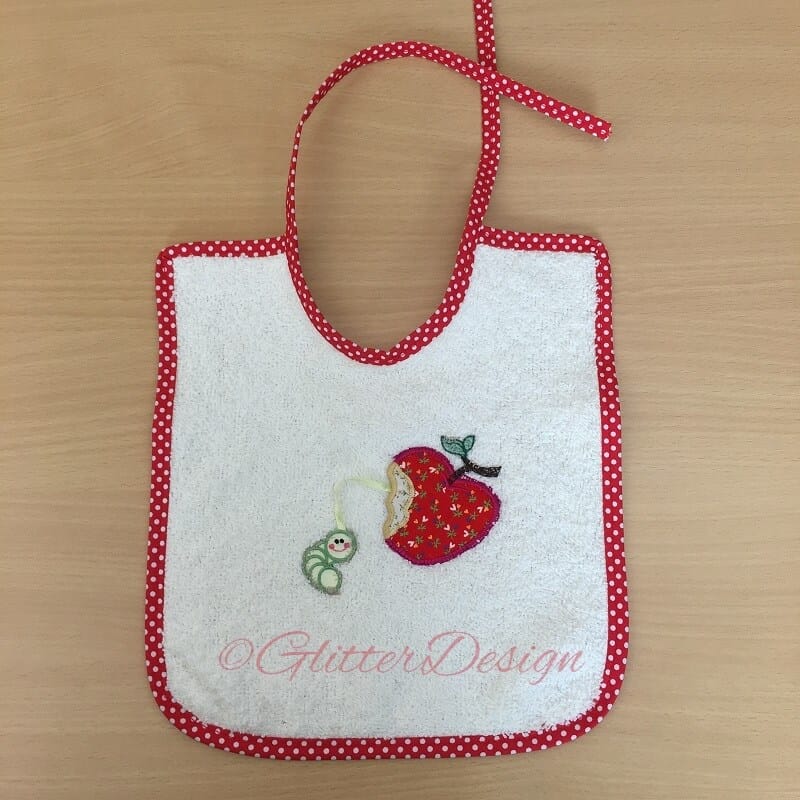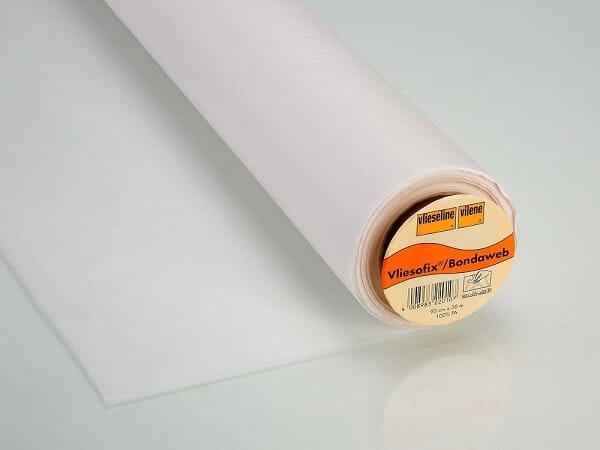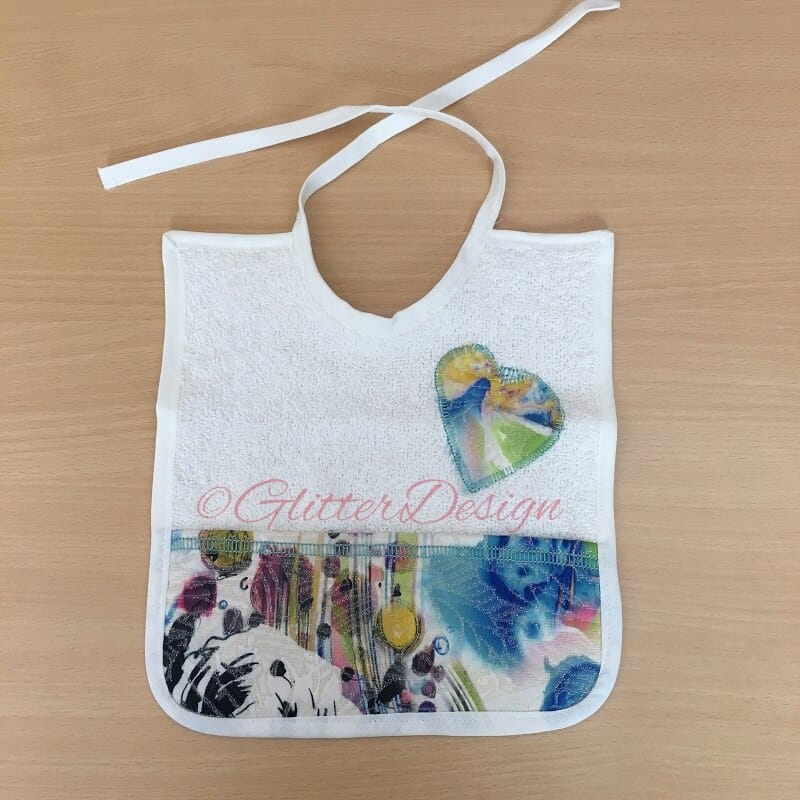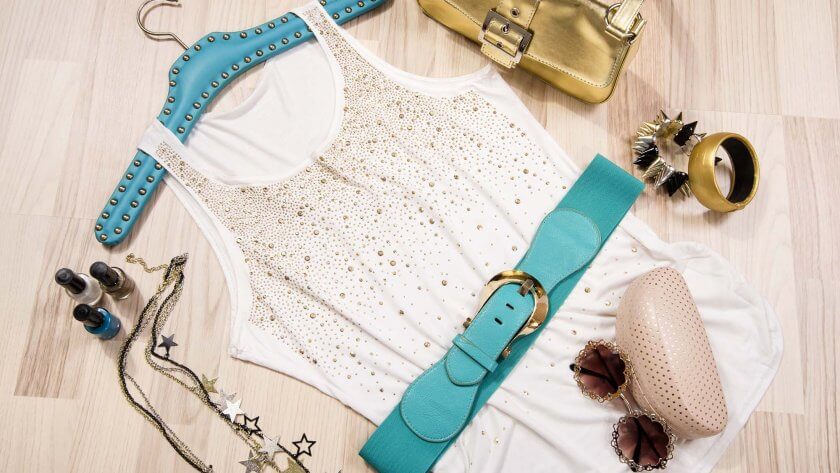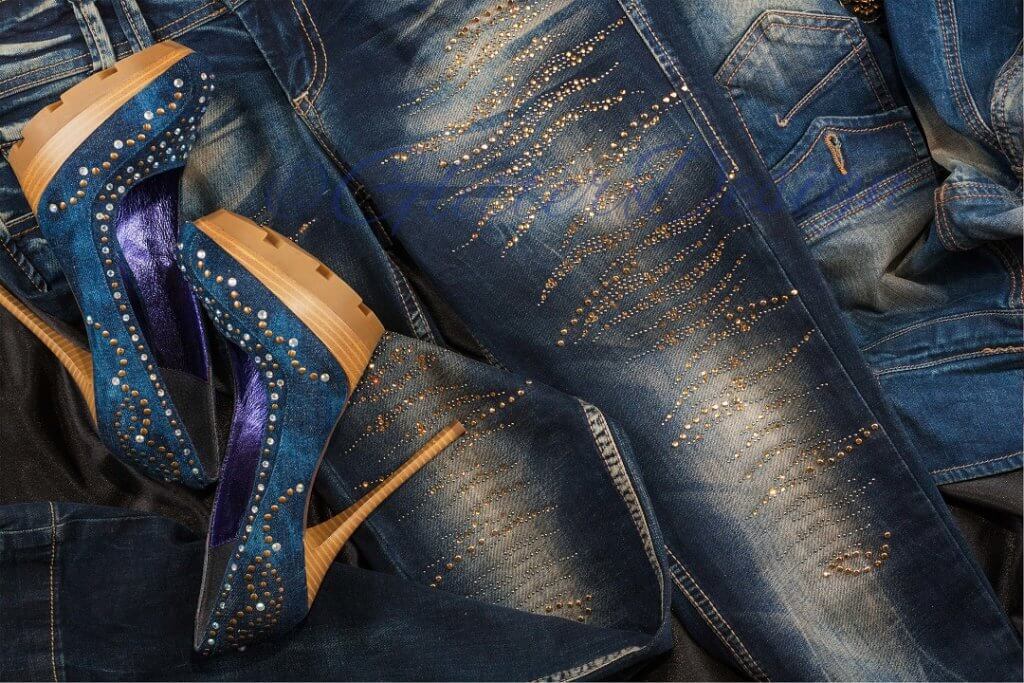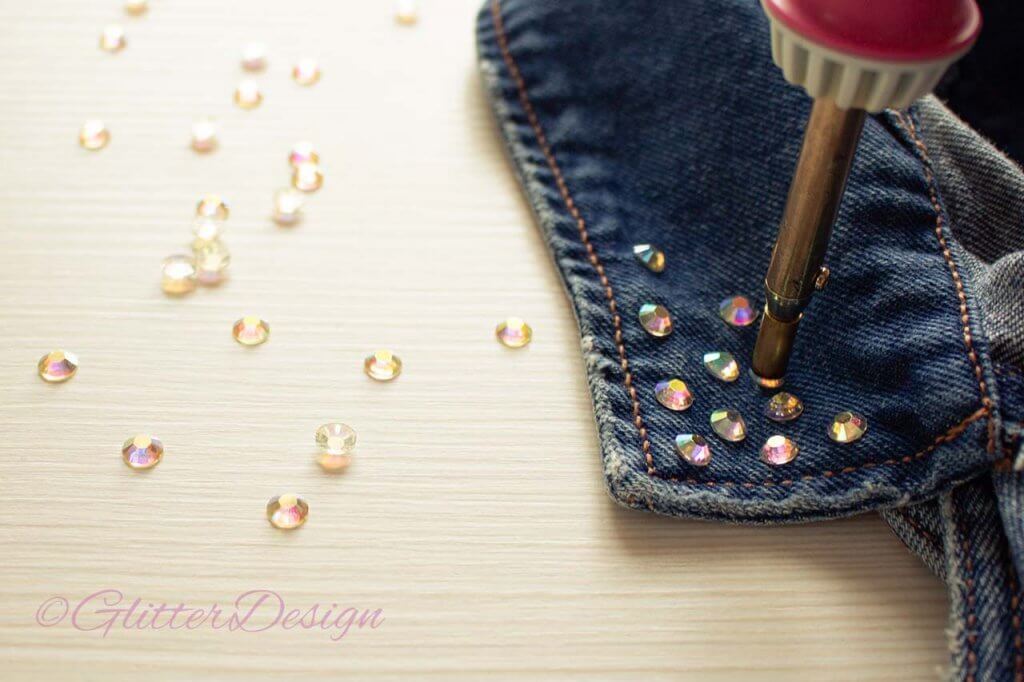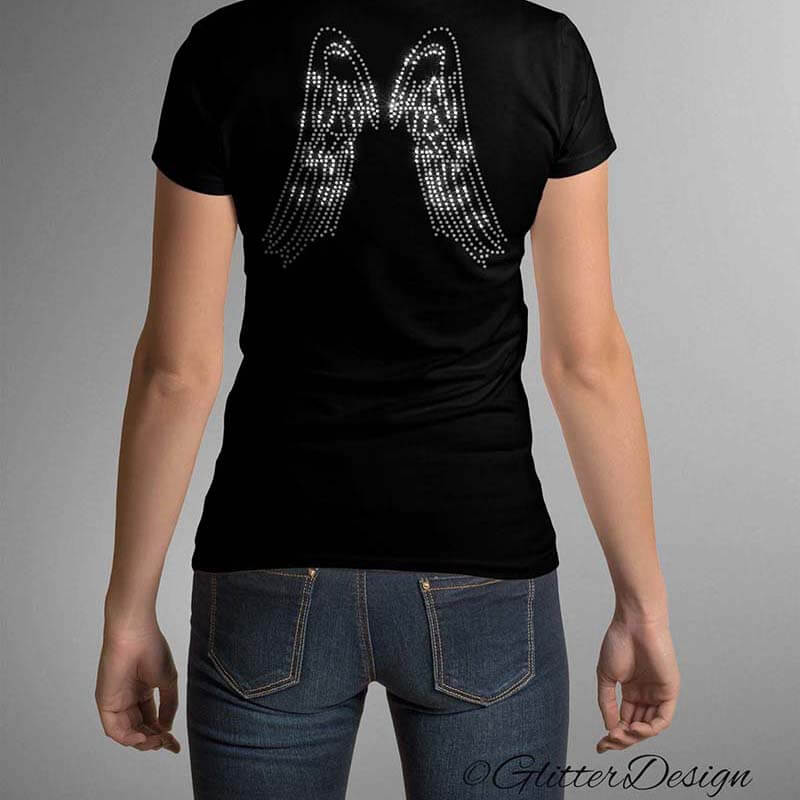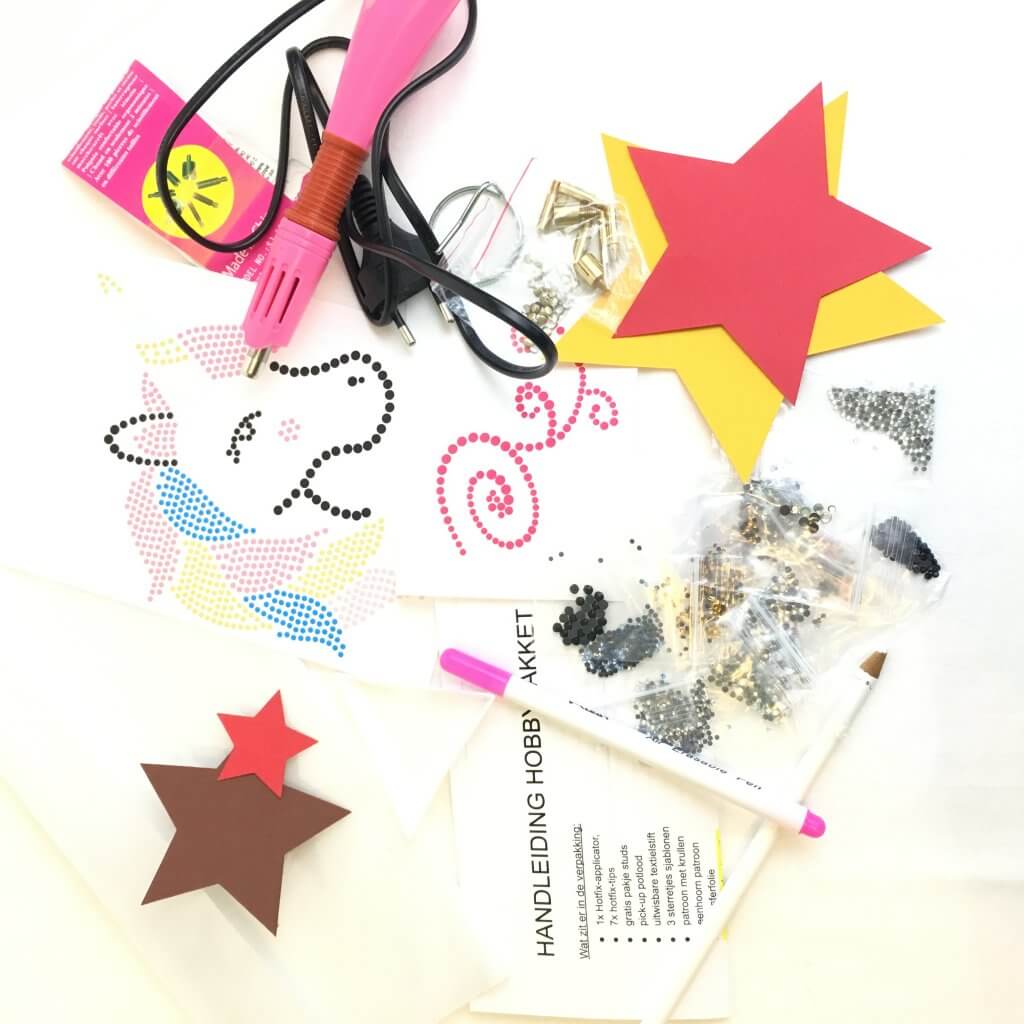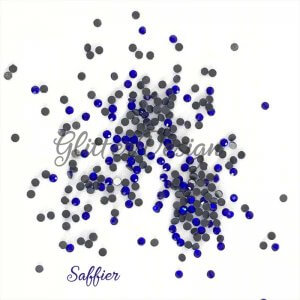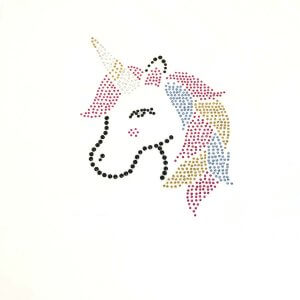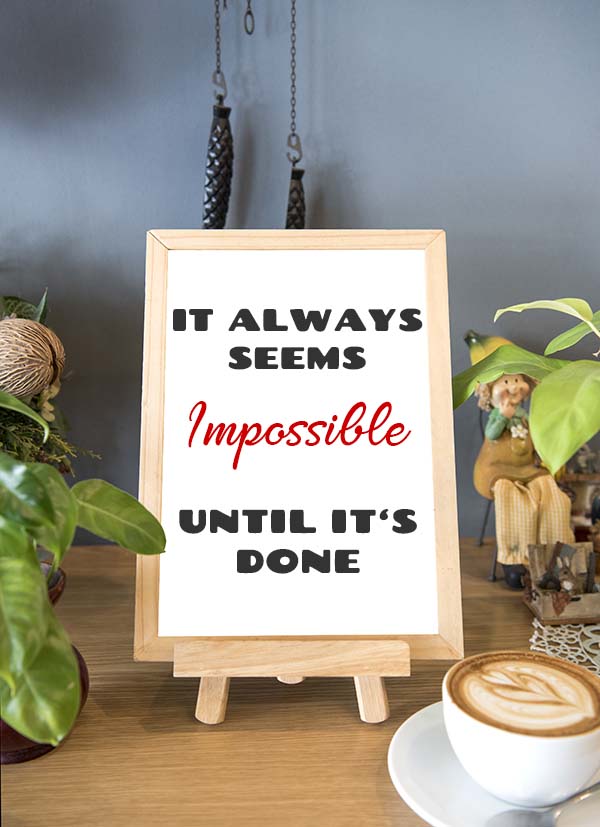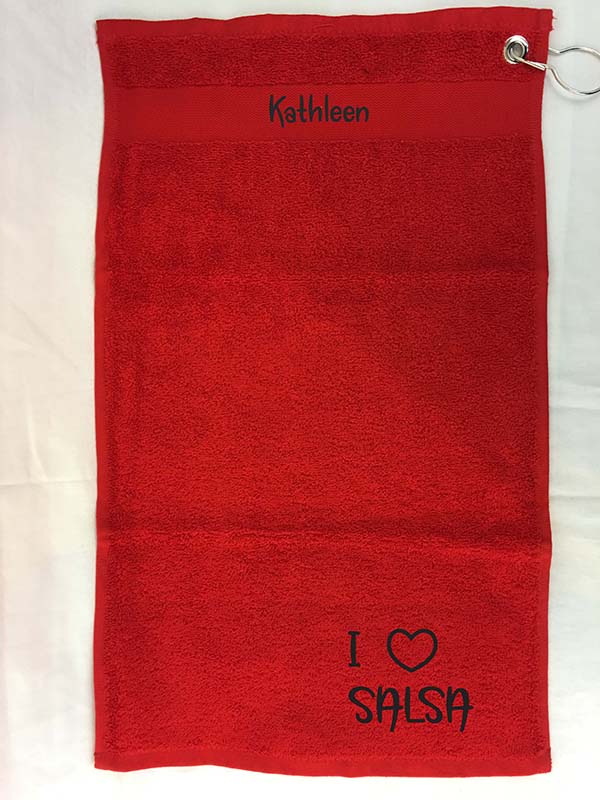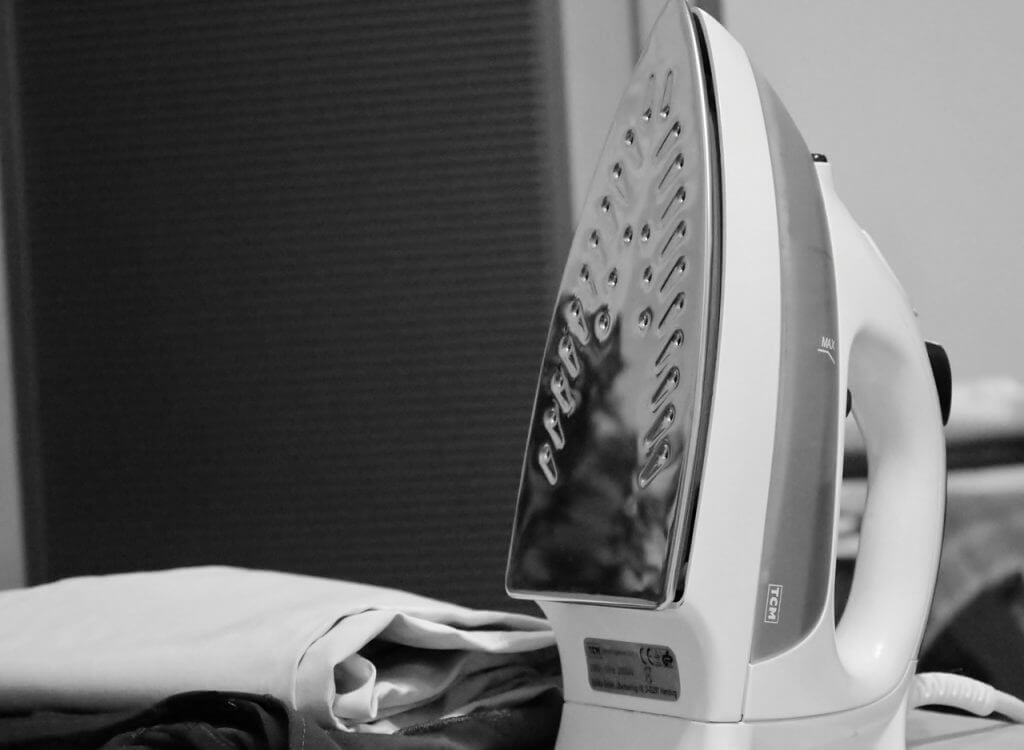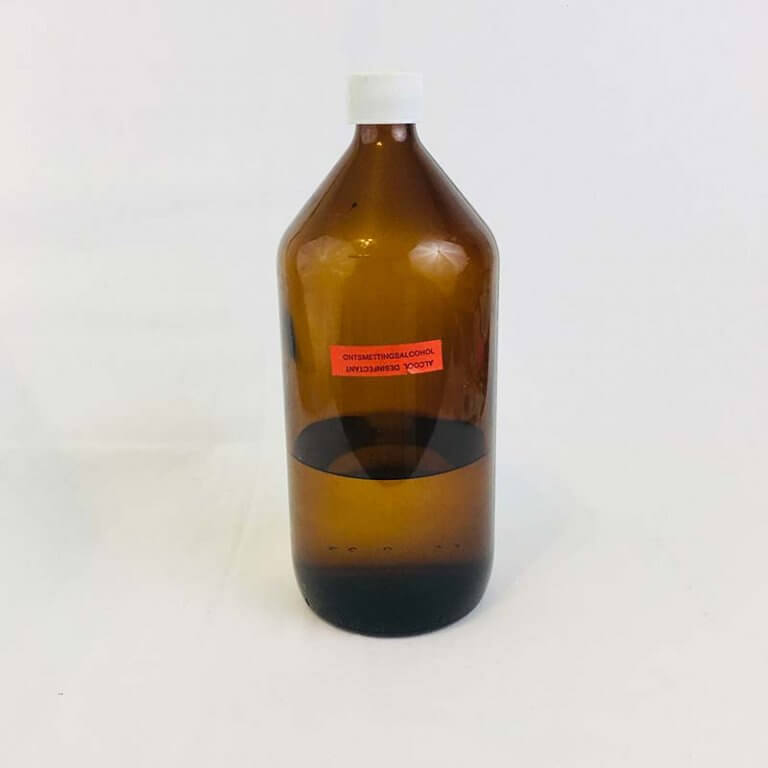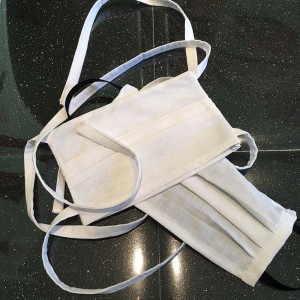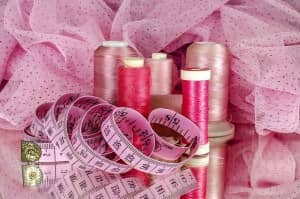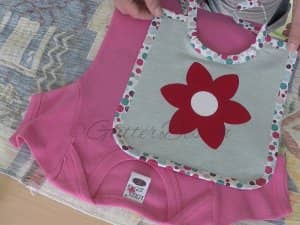THE MAKING AND PRINTING OF BABY BIBS AND BURP CLOTHS
Making bibs for a baby is really not that difficult. It’s fun to do and you don’t need that much material. Just a few steps, and you have great and fun bibs or burp cloths!
Self-made bibs are a very original baby gift. I’m also going to teach you how to personalize them with a glitter application and / or flocked HTV. How nice would it be if you could give at a baby shower, something you made yourself as a gift? Immediate respect from everyone!
What are we going to need?
CHECKERED PATTERN PAPER
The easy way is to draw a pattern on checkered pattern paper. This is patterned paper that is printed with squares of 4 by 4 cm. We need a piece of pattern paper 20 cm wide and 25 cm long. Pattern paper is sold per packet of 4 or 5 sheets or per roll of 4 or 5m. The prices vary from around € 2 to €6. If you go to a fabric show, don’t forget to bring one. They are sold there very cheaply.
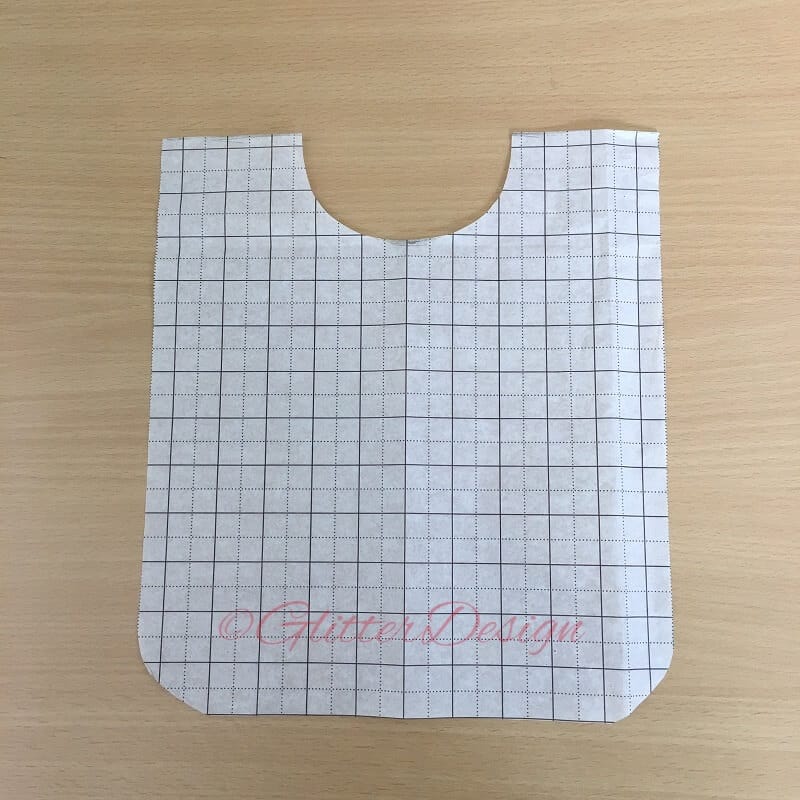
BIAIS TAPE AND SEWING THREAD
In addition, we also need 1.5 m bias tape to finish and tie of the bib. You can make bias tape yourself, but to make this bib, I will use ready-to-use bias tape.
With bias binding you can hem off or decorate items. It is cut on the bias so that it can stretch and it is easier to trim round seams. Bias tape is a strip of fabric folded in three: a wider center piece with two flaps folded inwards. It is used to finish rough edges, edges of quilts, place mats and bibs, around the edges of the armholes and the neck instead of a siege and as a simple bow or handles for casual bags.
Biais tape can be used in such a way that it is (virtually) invisible from the outside; it can also be used decoratively in a visible edge. The advantage of bordering with bias tape is that you do not need to trim a seam allowance and you therefore have virtually no loss of fabric when making a hem.
Of course we also need sewing thread in a matching color.
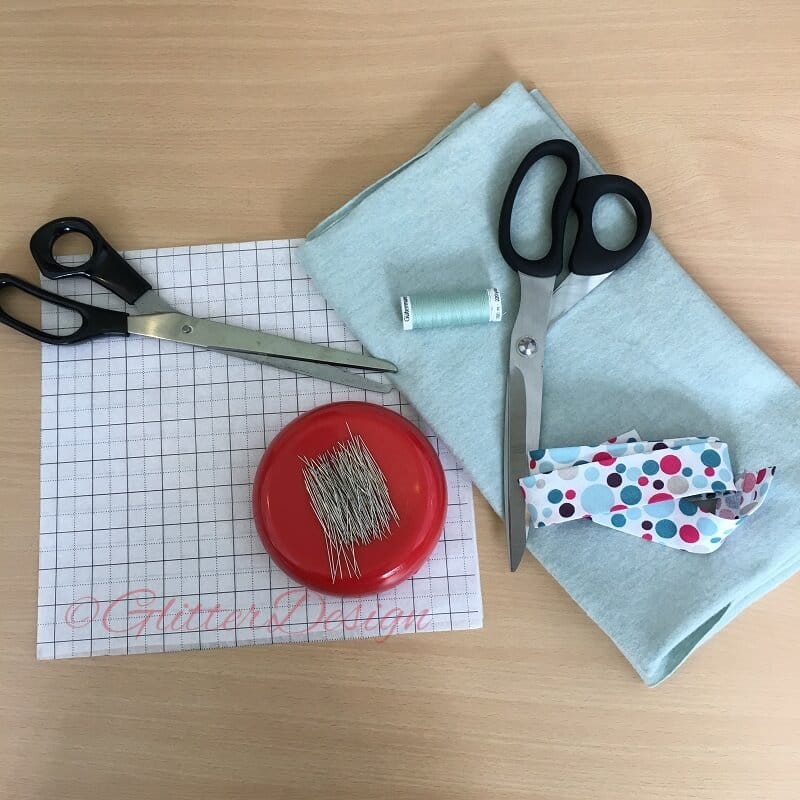
FABRIC
In terms of fabric, cotton and waffle cotton is a popular choice. Flannel is also possible, this is a slightly lighter fabric. Bamboo jersey is also an excellent choice to make a baby bib. Bamboo jersey has a number of unique properties: it is anti-bacterial, highly absorbent and ultra soft. We only need a small piece (min. 20 x 25 cm). So maybe you have a surplus that you could use.
SCISSORS and PINS
- paper scissors
- fabric scissors
- pins
EQUIPMENT
- iron (for the application with the transfer tapel)
- sewing machine (for the other applications)
METHOD FOR A STRAIGHT BIB
- Choose a pattern and pin it on your chosen fabric
- cut out the pattern without seam allowance
- trim the outside edge with bias tape
- afterwards you can border the neck edge with the other bias and leave approximately 20 to 25 cm sticking out at each end to tie the bib
- then all you have to do is close the tie around the folding edge
METHOD FOR A ROUND BIB
- choose a pattern and pin it on your chosen fabric
- cut out the pattern without seam allowance
trim the edges with bias tape - finish the ends with a piece of velcro
PERSONALIZE AND PRINT
Baby bibs are very grateful to make something fun out of it. There are several things you can do.
WORKING WITH A READY-TO USE APPLIQUE
You can buy ready-to-use applications and sew-on or stitch-on. For this you use a small zigzag stitch on your machine.
On the right a photo of a bib where I have stitched on a purchased applique and matching bias tape.
MAKE AN APPLIQUE YOURSELF
Of course you can also make a nice drawing yourself and apply it. Vliesofix is very useful for this.
Vliesofix can be purchased per sheet or per meter in the fabric store. It is a double-sided type of adhesive paper for fabric applications. When ironing it on a fabric, it will stick permanently and that makes it a lot easier than sewing. You can fix applications with Vliesofix on fabric. It is double-sided, so that one side sticks to the application, you remove the paper and the other side irons onto the bib.
Beware. Vliesofix is not the same as vlieseline. The difference is that fleece line is single-sided and is used, for example, to reinforce clothing in certain places (such as collar or waistband). Vlieseline is actually a brand name for an inner lining or fleece that is ironed or sewn onto textile. The brand name has become so well known that it is generally used for all types of textile reinforcement or lining.
You could also stick a self-made applique to the bib with textile glue. But this does not give such a nice and smooth result.
What is also possible is to work with scraps of fabric. On the image on the right, I have made a bag at the bottom of a bib using a piece of fabric. I flipped the edge of the bag and then secured it with the overlock which also gives a nice added value to the bag. Moreover, I cut a heart out of the same fabric and stitched this simple homemade application with the sewing machine on to the bib.
APPLICATIONS WITH FLOCKED HTV (OR flocked velvet)
In my opinion, you make the most beautiful appliques by using flocked HTV (flocked heat transfer vinyl) and / or glitter HTV.
ADVANTAGES OF FLOCKED HTV
feels soft and velvety
it also has a somewhat increased dimensional effect
is a great inexpensive alternative to embroidery
RECOMMENDED TEXTILES
- 100% cotton
- 100% polyester
- all cotton polyester blends
- lycra or spandex
You can buy sheets of flocked HTV and glitter HTV in the store. You can cut an image yourself or with a cutting machine such as a Silhouette Cameo or Cricut. In the video below I show you how to print a bib with flocked HTV by using an iron.
I have drawn a simple flower in Adobe Illustrator that you can download below for free. You can print it with a Cameo or Cricut cutter. I cut out the petals of the flower in red flocked heat transfer vinyl and the heart of the flower in white glitter HTV. Of course you choose your own colors that are in line with the bias tape that you have stitched. In the video I show how to apply this ironing applque to a selfmade bib.
Download the free file here: Flower in SVG
Or download the free file here: Flower in PDF
As you can see, there are many possibilities to do something nice with a bib and you can certainly try that yourself. Let me know if it works and give your response below.


